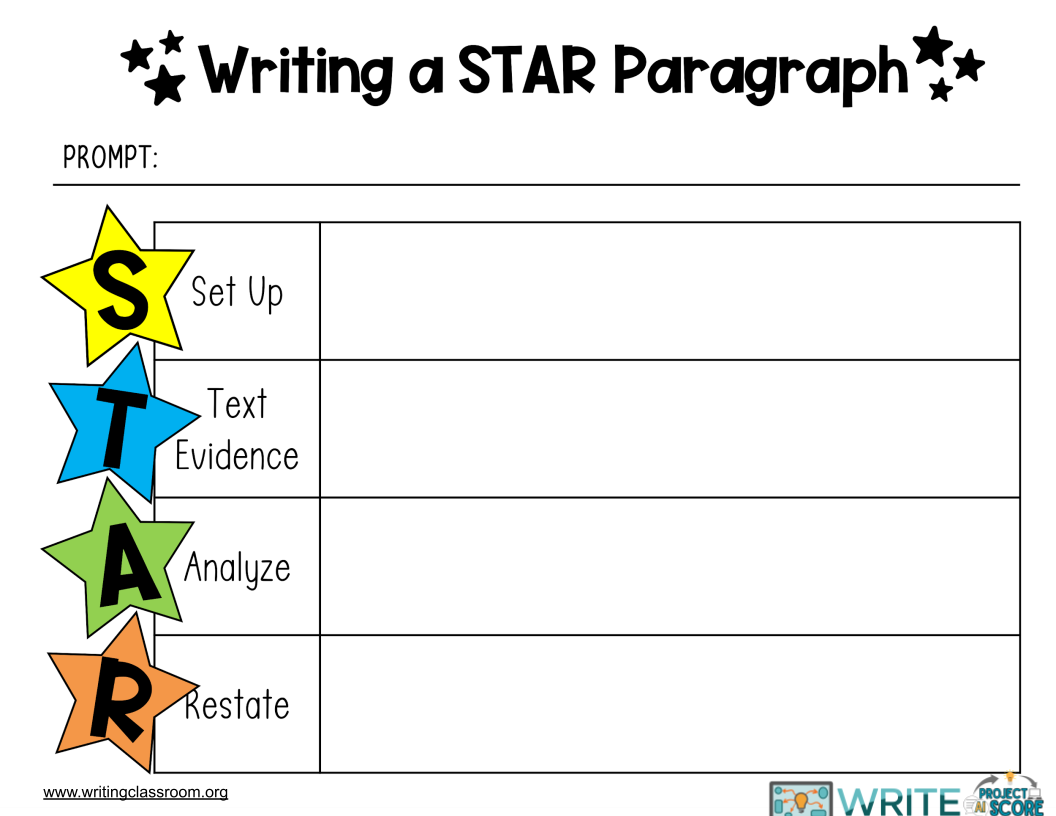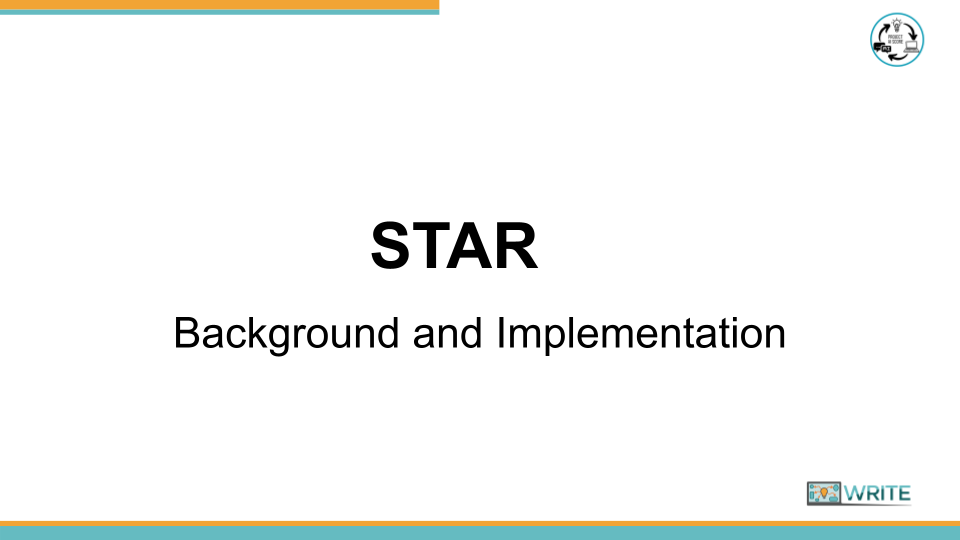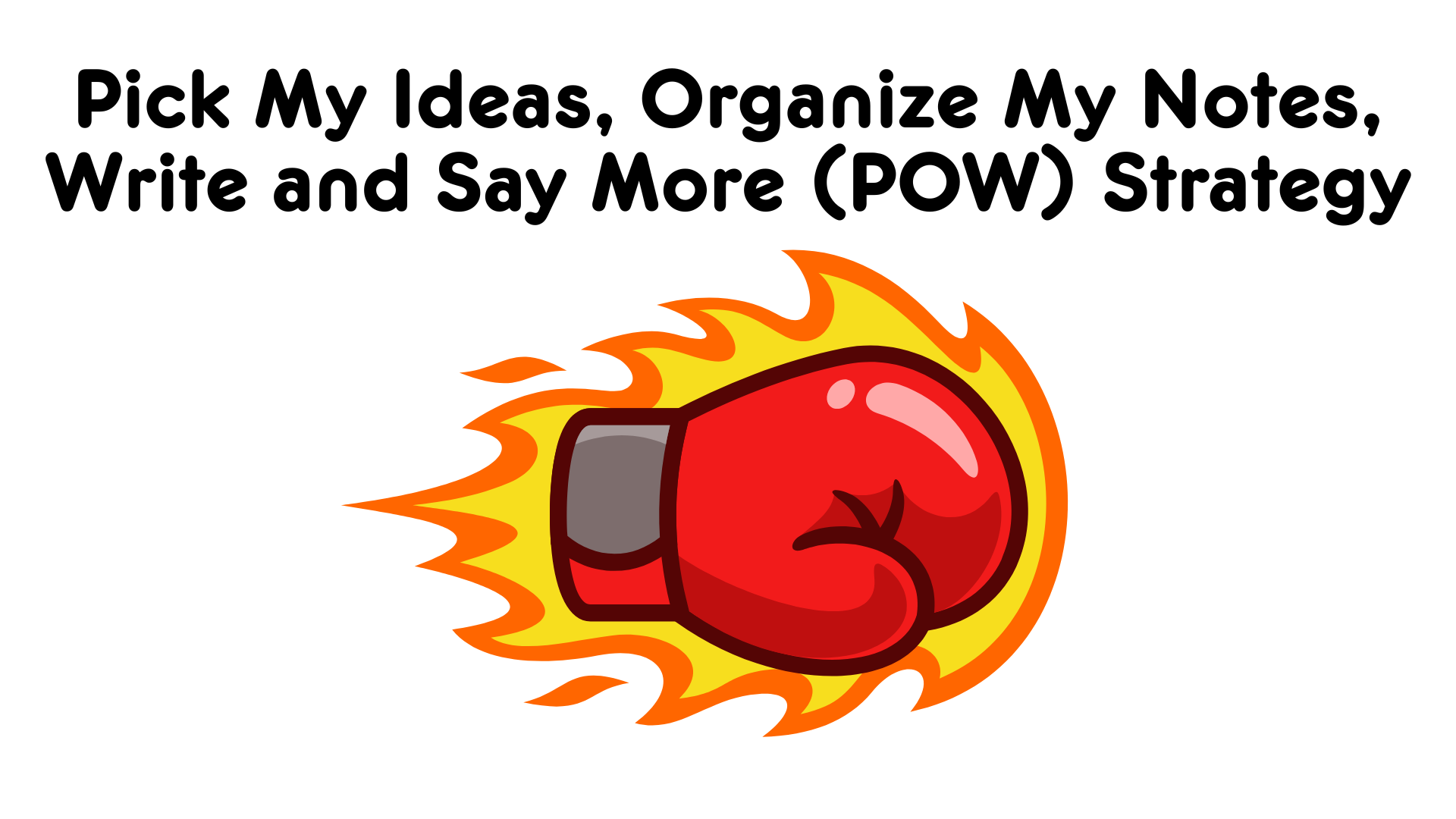Set up, Text Evidence, Analyze, Restate (STAR) Strategy
Strategy Parameters
-
Genre: Informational / Evidence-Based Response.
-
Grade Level: Upper Elementary to Middle School (Grades 4–8).
-
Writing Process: Planning and Drafting.
At-A-Glance
STAR (Set up, Text Evidence, Analyze, Restate) is a structural strategy designed to help students write focused, text-based responses by organizing their thinking and incorporating evidence. This structure reduces ambiguity and helps students move beyond summarizing to develop thoughtful, analytical explanations of how their evidence supports their main idea. The approach builds confidence and strengthens their ability to write with clarity and purpose across various subjects.
Learn More
Best Practices
-
Teach each STAR step explicitly using think-alouds and real examples.
-
Create visual supports like anchor charts, graphic organizers, and color-coded checklists.
-
Give specific feedback on each of the four components: Set Up, Text Evidence, Analyze, and Restate.
-
Incorporate peer discussion before writing to help students generate and refine ideas.
-
Use direct quotes and practice paraphrasing to effectively incorporate evidence.
Common Pitfalls
-
Don’t skip the modeling phase; students need to see the strategy applied through think-alouds.
-
Don’t assume students can analyze without support, as this is a complex skill that requires explicit teaching.
-
Don’t accept vague, unsupported answers that lack the required text evidence.
-
Don’t introduce STAR as one large chunk; teach the steps sequentially and incrementally.
-
Don’t make STAR feel like a rigid checklist; focus on the structure guiding thoughtful writing.
Implementation Tips
-
Modeling and Think-Aloud: Begin by modeling STAR with a think-aloud using a simple, shared writing prompt and class text. Guide students through each step: Set Up with a clear topic sentence, Text Evidence from a reading, Analyze by explaining why the evidence matters, and Restate the main idea in a new way.
-
Scaffolding and Guided Practice: Use partner writing roles to scaffold the process, allowing students to take turns focusing on different STAR components. Rotate through STAR stations for hands-on, focused practice on specific skills, such as introducing text evidence or writing a strong analysis.
-
Independent Application and Tools: Transition to independent writing by providing graphic organizers, color-coded checklists, and reference cards to support students’ self-regulation. This helps students apply the structure consistently and build confidence in their ability to compose a complete response.
-
Revision and Reflection: Wrap up the writing process with dedicated team revision time and peer feedback focused on the STAR components. End with short student reflections to reinforce the strategy and celebrate progress and growth.







